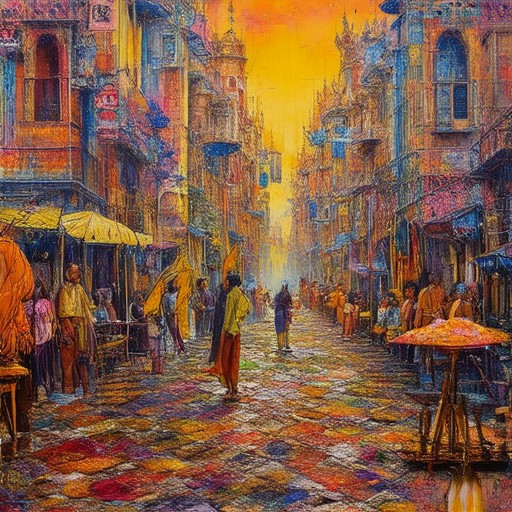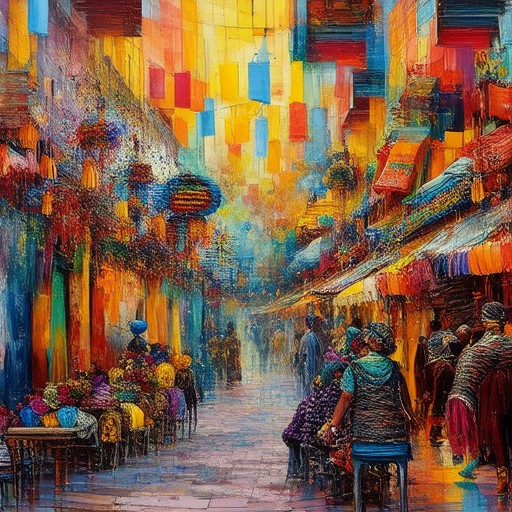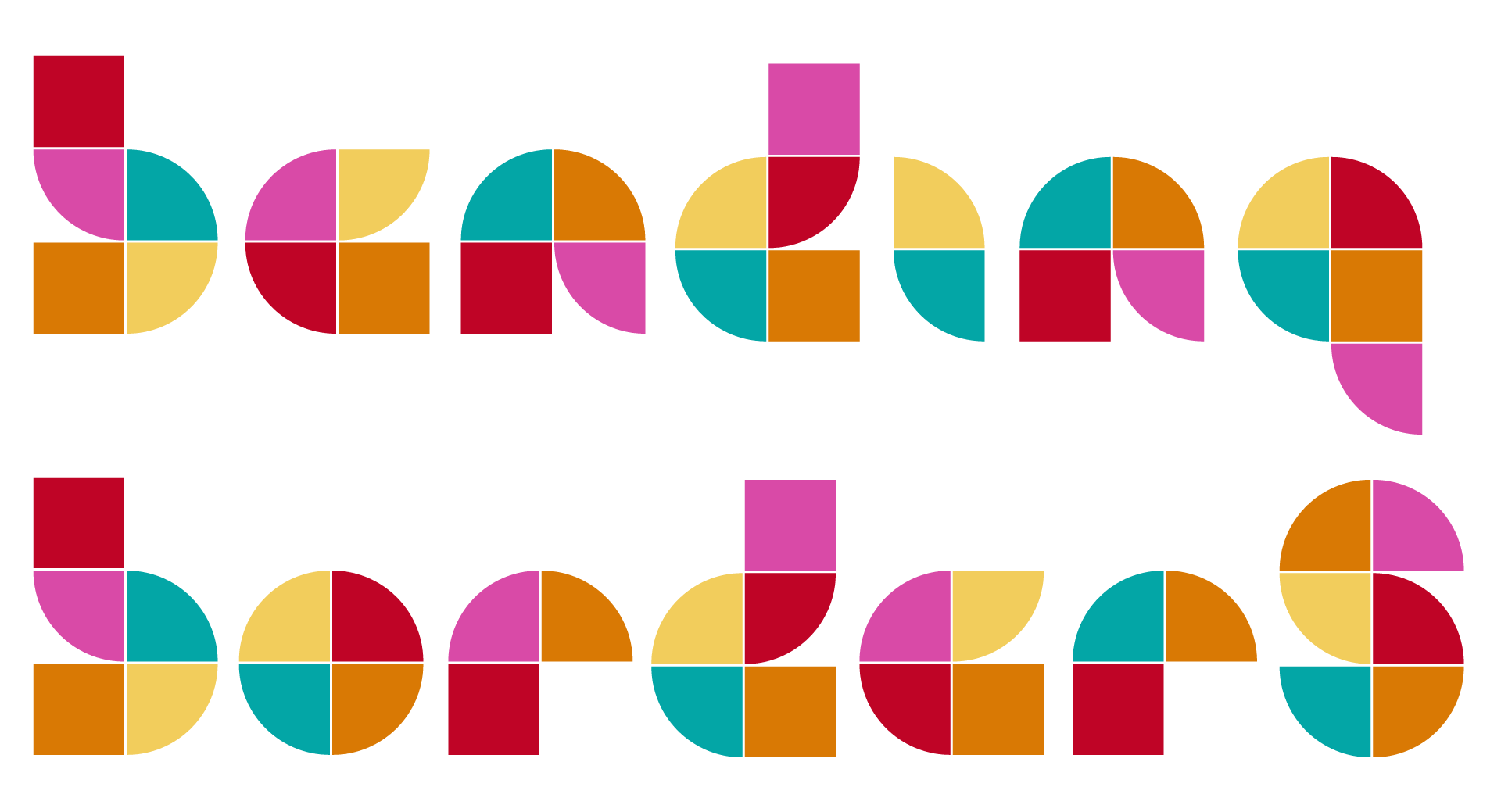Cultural exchange is the process where different cultures share their traditions, beliefs, and practices, leading to mutual understanding and appreciation. Have you ever wondered how different cultures influence each other? In this article, we’ll explore real-life examples of cultural exchange that have shaped our world. From ancient trade routes to modern-day student exchange programs, these interactions have not only enriched our societies but also played a crucial role in fostering global connections. Discover how cultural exchange stories continue to evolve, shaping our shared history and future. Whether you’re interested in historical examples or modern-day exchanges, this article offers insights into the power of cultural exchange.
Key Takeaways
– Food Bridges Cultures: Explore how iconic foods like coffee, chocolate, and spaghetti traveled across continents, uniting people and spreading traditions.
– Music Connects Worlds: Discover how music, from The Beatles to Japanese anime, transcended borders, becoming a universal language of global culture.
– Art Transcends Boundaries: Learn how Islamic art inspired architectural masterpieces like the Alhambra, shaping Western design and bridging civilizations.
– Organizations Facilitate Exchange: Understand the role of platforms like Bending Borders and Cultural Exchange Initiatives in fostering global connections through shared stories and experiences.
– Preserving Heritage: Recognize the vital role of cultural exchange in safeguarding traditions and ensuring their relevance in a rapidly changing world.

Cultural Exchange Examples
Cultural exchange encompasses a variety of activities and initiatives that foster mutual understanding and appreciation among different communities. Here are several examples:
- Art and Music Collaboration: Artists from diverse cultural backgrounds collaborate on projects such as joint exhibitions, performances, or albums. This promotes cross-cultural dialogue and appreciation.
- Educational Exchanges: Programs like student and teacher exchanges facilitate cultural immersion, allowing individuals to experience different educational systems and cultural practices firsthand.
- Technological Innovation: Cultural influences shape technological advancements, such as Japanese robotics influencing global industries and inspiring innovations in automation and engineering.
- Language Learning Platforms: Digital platforms like Duolingo make language learning accessible, bridging gaps between cultures through mutual understanding and communication skills.
- Cultural Festivals: Events like the Olympic Games and the Cannes Film Festival bring participants from around the world, showcasing diverse cultures and fostering exchange.
- Tourism and Travel: Tourism contributes significantly to cultural exchange as travelers explore foreign cultures, engage in local traditions, and share their own customs with others.
- Migrant Integration Programs: Initiatives aimed at helping migrants adapt to new environments often include cultural workshops, language classes, and community events to promote integration and cultural respect.
- Digital Content Sharing: Platforms like YouTube and Instagram enable individuals to share their cultural practices, recipes, and traditions, reaching global audiences and fostering cross-cultural connections.
- Business Partnerships: Companies collaborate across borders to develop products and services tailored to local cultures, such as McDonald’s adapting menus to suit regional preferences.
- Peacebuilding Efforts: Cultural exchange plays a crucial role in peacebuilding, encouraging dialogue and cooperation between groups that might otherwise be in conflict.
Example of Cultural Exchange in History
The historical record is rich with examples of cultural exchange, where civilizations have shared knowledge, traditions, and innovations. One prominent example is the Silk Road , which connected the Eastern and Western worlds during ancient and medieval times.
Spanning thousands of miles, the Silk Road facilitated the movement of goods, ideas, and cultures between China, India, Persia, and the Roman Empire. This extensive network allowed for the exchange of technologies, art, religion, and philosophies, shaping the development of many civilizations.
Another notable example is the Renaissance , a period marked by significant cultural exchange between Europe and the Islamic world. Scholars, artists, and traders brought knowledge of mathematics, astronomy, medicine, and architecture from the Islamic territories to Europe, contributing to the intellectual and scientific advancements of the time.
These historical instances demonstrate how cultural exchange has been a driving force behind innovation, tolerance, and the advancement of human knowledge.

Cultural Exchange Events Explained
Cultural exchange events are gatherings or activities designed to foster mutual understanding and appreciation among different cultures. These events often bring people from diverse backgrounds together to share traditions, customs, values, and perspectives, promoting global unity and cooperation.
Why Are Cultural Exchange Events Important?
- Breaking Down Barriers : They help reduce misunderstandings and stereotypes by providing opportunities for direct interaction.
- Building Bridges : These events encourage cross-cultural communication, helping people connect on a deeper level.
- Promoting Diversity : By celebrating different cultures, they highlight the richness of diversity in our global society.
Types of Cultural Exchange Events
- Festivals and Celebrations
- Events like the Bending Borders Global Culture Festival showcase traditions from around the world, featuring performances, art, and food.
- Trade Shows and Exhibitions
- Platforms such as the International Cultural Exchange Fair provide space for businesses and communities to display and exchange cultural products and services.
- Workshops and Seminars
- Expert-led sessions on topics like language, history, and traditional crafts offer hands-on learning experiences.
- Exchange Programs
- Government or educational initiatives facilitate student and professional exchanges between countries, fostering cultural immersion.
- Collaborative Projects
- Joint ventures between artists, designers, and thinkers from different cultures result in unique works that blend diverse influences.
These events not only entertain but also educate, inspiring participants to appreciate and respect different ways of life. By participating in cultural exchange events, individuals gain a deeper understanding of global interconnectedness and its benefits for humanity.

Example of Long-Distance Cultural Exchange
Long-distance cultural exchange occurs when traditions, languages, foods, or customs travel across vast geographical distances, often through trade, migration, or colonization. This process fosters mutual understanding and influences among different cultures.
One prominent example is the spread of food across continents. For instance:
- Coffee : Originating in Ethiopia, coffee cultivation and consumption spread through trade routes to the Middle East and eventually Europe, becoming a cornerstone of many cultures.
- Chocolate : From its origins in Central and South America, chocolate made its way to Europe via Spanish missionaries, leading to the creation of iconic European chocolates like those from Switzerland and France.
- Spaghetti : believed to have evolved from Chinese noodle-making techniques introduced to Italy during Roman rule, spaghetti became a staple of Italian cuisine and later influenced dishes worldwide.
Another example is the globalization of music . American rock ‘n’ roll bands like The Beatles brought British music to global audiences, influencing countless artists and shaping contemporary culture in countries like Japan and Brazil.
Additionally, Islamic art and architecture had a profound impact on the Iberian Peninsula during the Middle Ages, inspiring structures like the Alhambra in Spain, which later influenced Western architectural styles.
These examples illustrate how long-distance cultural exchange has shaped our world, fostering connections between distant regions and enriching global heritage.
Cultural Exchange Examples
Cultural exchange refers to the sharing of ideas, traditions, and customs between different groups or nations. Here are two notable examples:
Bending Borders
Bending Borders is a platform dedicated to fostering global understanding through cultural exploration. They connect travelers, students, and professionals to share stories and experiences, bridging cultural divides. Their blog features diverse perspectives and travel tips, appealing to anyone interested in learning about the world from various viewpoints.
Learn more about Bending Borders .
Cultural Exchange Initiatives
Cultural Exchange Initiatives focuses on creating opportunities for individuals to engage with different cultures. They organize events, workshops, and programs that promote mutual respect and understanding. Their initiatives often involve collaborations with schools, universities, and community organizations to foster meaningful connections.
Visit Cultural Exchange Initiatives .

What are 3 examples of long distance?
- Boston Marathon: A famous 26.659-mile (42.195 km) race held annually in Boston, Massachusetts, United States, since 1897.
- New York City Marathon: A 26.219-mile (42.195 km) race held in New York City, New York, United States, since 1970.
- Grand Canyon Ultra: A 46-mile (74 km) trail race through the Grand Canyon National Park in Arizona, United States, known for its challenging terrain and high elevation changes.
This concludes the response.




0 Comments